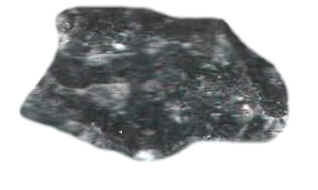|
CORDIERITE
|
 |
It is a silicate of magnesium and aluminium which may also contain iron. It's colour ranges from colourless to deep blue (it is usually blue). It's blueness depends on the proportion of iron it contains. The greater the concentration of iron the bluer the cordierite. The most sought after stones are dark blue and resemble sapphire. Sometimes it may contain some hematite in which case a red colouring may be evident. Most red corderite, which is also known as bloodshot iolite, is from Sri Lanka.
Cordierite is moderately hard measuring 7 on the mohs scale. It is used mainly for jewellery and carvings and is often cut in steps to bring out the blue colour (it is important that it is cut at a specific angle). It is believed that it was used in Europe as far back as in the dark ages.
It is named after Pierre L A Cordier, a french geologist who discovered it at the end of the 18th century. It is also known as iolite (this means violet stone) or dichroite.
Under certain conditions it may change into pinite which is a combination of chlorite and muscovite.
It occurs in aluminium rich rocks, gneisses, schists and pegmatites that have been altered by extreme heat. It may also be found in alluvial deposits. It is fairly widespread and can be found in Finland, Norway, Germany and Conneticut USA. Alluvial deposits can be found in Burma, India and Sri Lanka. They may be found in the form of small pebbles which have been worn down by water.
A silicate of copper which also contains oxygen and hydrogen. It is mostly green but with a hint of blue and is transparant. The green colouring can sometimes be so strong that it loses its transparancy and may appear opaque. It may appear different colours depending on the angle from which it is viewed. It is very rare and valuable and the finest samples may be mistaken for emerald..
It is too softy to be used as a gemstone (5 on the mohs scale) and is brittle and easily chipped. Despite this it is often cut to bring out it's best lights. It derives it's name from the greek words dia (meaning through) and optos (visible).
It's crystals mainly form in clusters. It can be found in copper veins which have been oxidised by air or water and in cavities that surround them. It may often be found imbedded in a calcite base. It is usually found in association with azurite, calcite, cerussite and chrysocolla.
The most well known source is in the Khir Giz steppes of Kazakhstan but it may also be found in Namibia, California USA, Chile and Congo.
